
Hope for a huge, ancient and imperilled fish
First Nations are leading efforts to make sure lake sturgeon can find a home in...
The BC Natural Resources Forum attracts a who’s who of the forestry, mining and oil and gas sectors to its annual gathering in Prince George.
This year, the forum offered a fireside chat on LNG exports sponsored by Petronas, a pre-banquet trade show reception sponsored by Coastal GasLink, a resource ministers’ breakfast sponsored by Tourmaline Oil and, for an extra $600 per person, a sold-out, six-hour workshop called “When ‘It’ Hits the Fan: Crisis Communications in Uncertain Times.”
(“Companies today live in a fishbowl of public scrutiny,” the workshop blurb stated. “When you’re in the spotlight, saying the right thing is just as important as doing the right thing.”)
Also included in the two-day line-up was a workshop called “Innovations in B.C.’s natural gas industry.”
The workshop’s sponsor? The Alberta government’s Canadian Energy Centre, better known as the energy war room, a provincial corporation that, according to its annual report, received $7.7 million in government funding in the fiscal year ending March 31, 2022.
The war room was established by former Alberta premier Jason Kenney in 2019 to counter what he dubbed disinformation about the oil and gas industry and rebut “every lie ever told by the green left about Alberta’s world class energy industry.” (A subsequent $3.5 million inquiry into the so-called green left and what Kenney called its “special-interest foreign funders” found no suggestion of wrongdoing or illegal actions on the part of any individual or organization.)
The war room’s presence at the BC Natural Resources Forum is perhaps not surprising, given its push for the expansion of B.C.’s nascent LNG industry and promotion of new LNG projects being considered by the B.C. government.
But some say Alberta –– a province notoriously quick to tell other jurisdictions to butt out of its affairs — is overstepping as B.C. Premier David Eby and his cabinet grapple with difficult LNG decisions after reaffirming the government’s commitment to climate action.
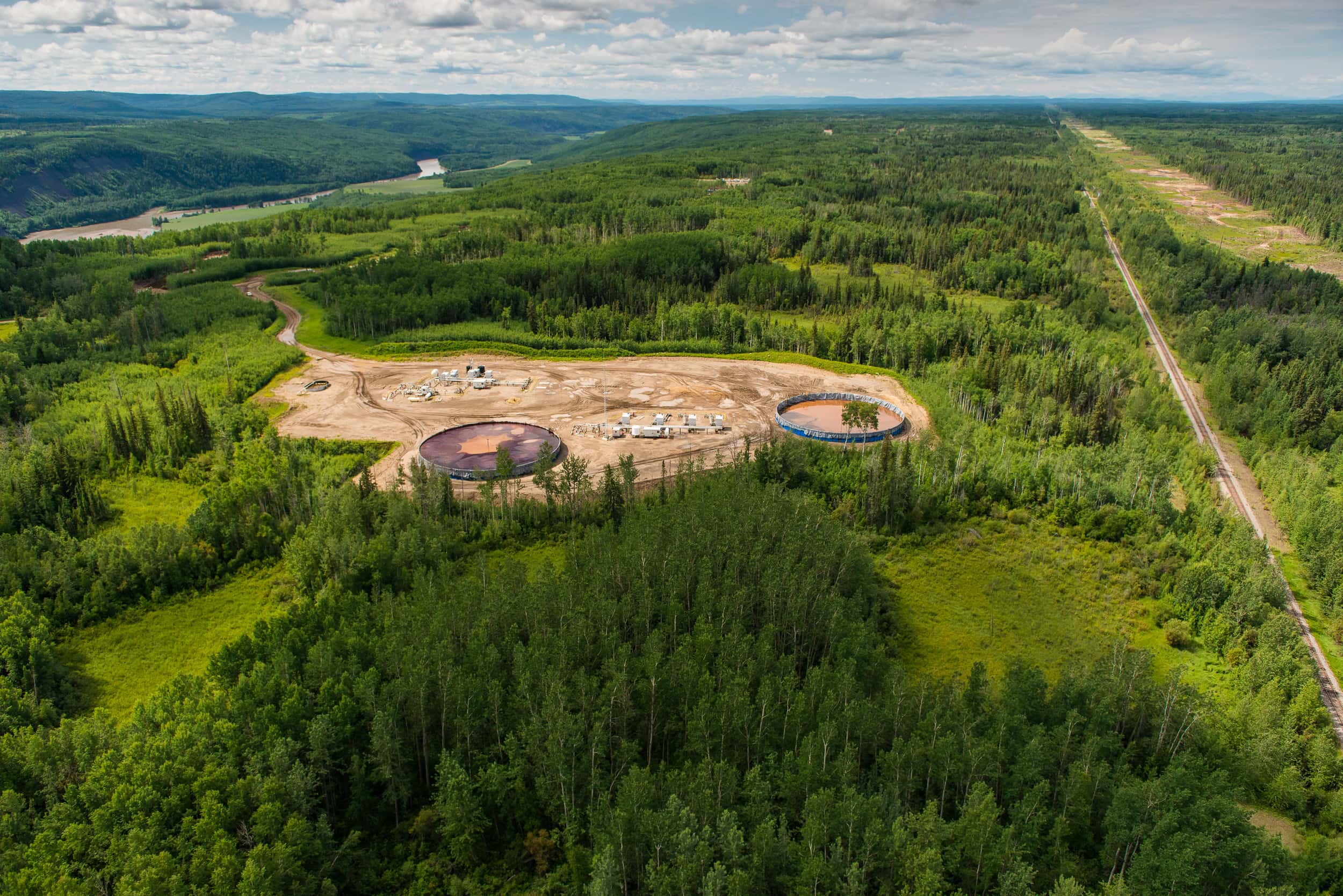
Chief among these decisions are how to balance carbon pollution from any new LNG projects with already missed greenhouse gas emissions targets, the fractious question of oil and gas subsidies and what to do about target-blowing emissions from Phase 2 of the LNG Canada project, which appears poised to proceed.
The project, which will liquefy fracked gas from B.C.’s northeast, sent to Kitimat through the Coastal GasLink pipeline, is Canada’s first LNG export project.
“I think it is definitely strange to see a Crown corporation from another province sort of meddling in the affairs of a neighboring province,” Peter McCartney, climate campaigner for the Wilderness Committee, told The Narwhal. “We’ve always known that they’ve been a publicly funded gift to the oil and gas industry. And this is just more evidence of that.”
Canadian Energy Centre CEO Tom Olsen, a former journalist and former United Conservative Party candidate, spoke briefly at the BC Natural Resources Forum panel, asking the audience to stand up and down to make a wave and saying he felt right at home because Prince George was culturally “like Alberta.” The panel focused on initiatives to increase production and reduce carbon pollution in individual fracking operations, sidestepping the issue of how such innovations will compensate for rising emissions from the fracking boom poised to begin to supply LNG Canada.
Olsen described energy centre ads that promote its Made the Canadian Way campaign, which makes the case for LNG and other Canadian oil and gas products on the grounds they are cleaner and more “responsible” than products from other countries. “Basically, the ad is you want to know your Nike shoes aren’t made in a sweatshop, you want to know your diamonds aren’t blood diamonds,” Olsen said. “If you use Canadian energy, here’s what you would learn.”
Olsen said the Canadian Energy Centre has been “around the world” with its message. “We do targeted digital campaigns, the G7 in Germany in June, COP27 in Egypt in November, the [offshore northern seas conference] in Norway this summer and the International Energy Summit in the U.K. in September. And we get millions of hits,” he said.
The centre has spent $412,253 on Facebook and Instagram ads since March 2020, disclosures from the Meta ads library show. One of the themes of the digital campaigns is Canada’s ability to reduce carbon emissions around the world, Olsen said. “I say it consistently — and no one really disputes it — if we can get our natural gas to cooperating jurisdictions, we have an immediate impact on greenhouse gas emissions.”
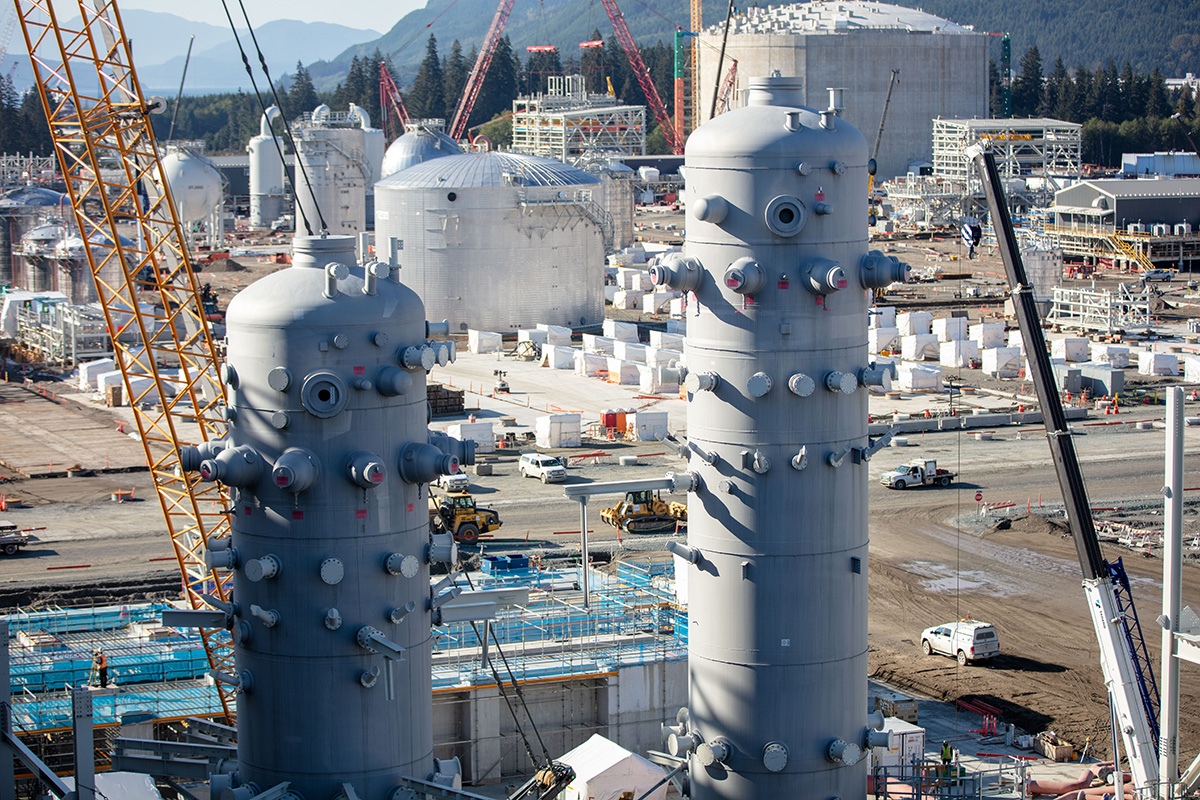
The energy centre claims Canadian LNG will be among the least carbon intensive in the world.
But University of British Columbia political science professor Kathyrn Harrison said the centre is “notoriously selective — and selective to the point of misleading — in the arguments that they make.”
If Canadian LNG were the least-carbon intensive in the world to produce, it would be the least carbon intensive over its life cycle, because each tonne of methane produces the same emissions when burned, Harrison pointed out. “The questions then are whether LNG is actually replacing more GHG intensive energy sources, or cleaner ones — and how Canada will meet our emissions targets, given significant emissions increases to produce the gas and operate LNG terminals.”
Harrison is also concerned by the energy centre’s claim that real emissions reductions will begin in five years and reach net zero in 30 years, “even as they oppose an oil and gas cap that would put the industry on a trajectory to achieve that.”
McCartney said it’s been “incredible” to watch the war room market B.C. LNG as clean and produced to a higher standard than LNG from other countries, suggesting it has taken a page from Ezra Levant, founder of the far-right website Rebel Media and author of the book Ethical Oil: The Case for Canada’s Oil Sands.
“It’s nonsense, our oil and gas pollutes, just like other oil and gas from all over the world,” McCartney said. “And in many cases, our oil and our fossil fuels are some of the worst on the planet. There’s this idea that the Canadian oil and gas industry is different [and] is somehow not causing climate change. It’s actually even talking about decarbonizing fossil fuels as if that is a real possibility. And it’s complete greenwash. Canada is one of the largest exporters of the fossil fuels that are causing climate change. And we need to rein that production of these polluting products in as soon as possible, just like the rest of the planet.”
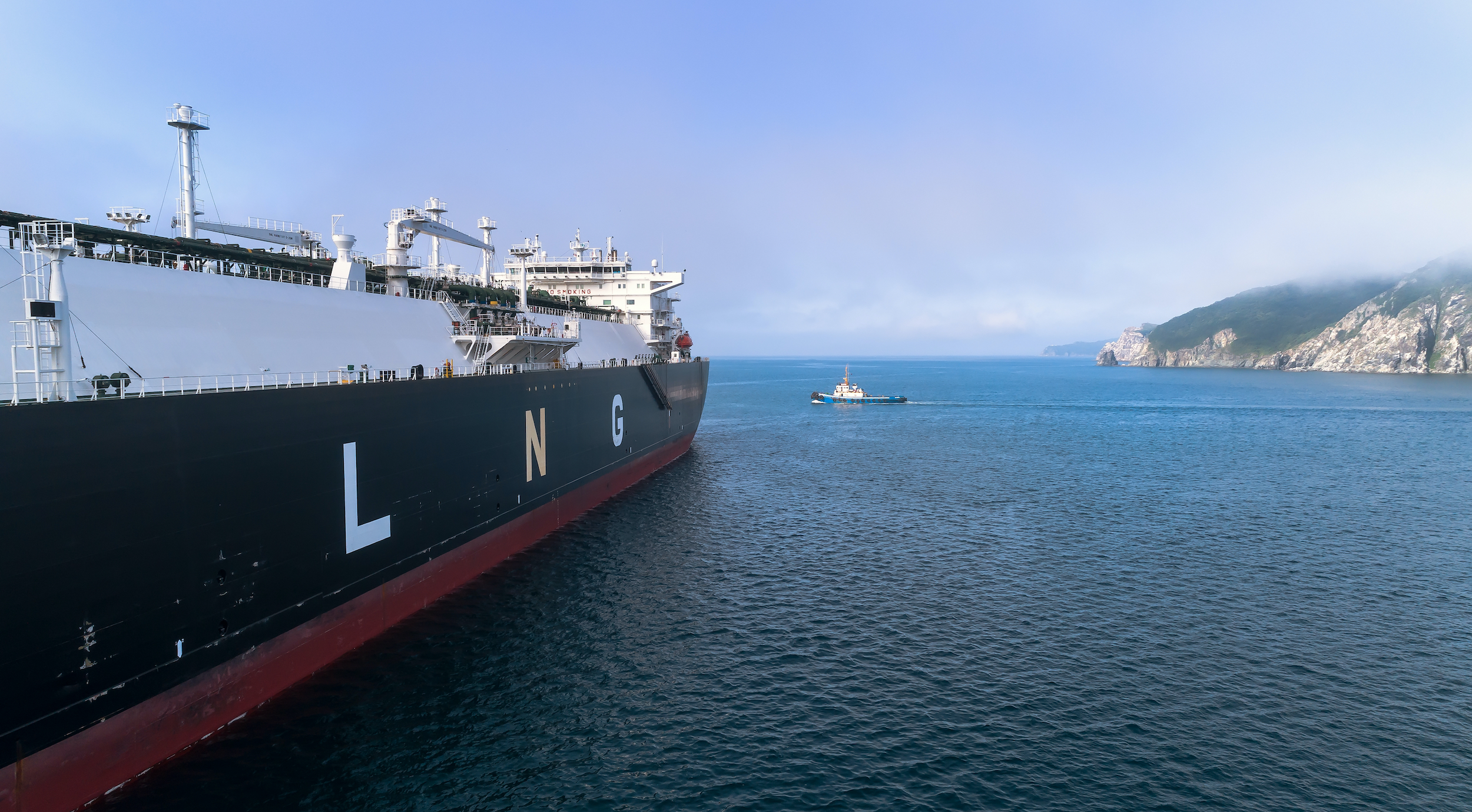
Speaking at the panel, Richard Wong, director of regulatory and operations for the Canadian Association of Petroleum Producers, said B.C. is on the cusp of becoming “one of the most important energy export hubs in the world.”
He pointed to increased LNG demand in Europe as a strategic opportunity for B.C. As the LNG Canada and Coastal GasLink pipeline projects near completion and B.C. becomes a global energy hub, it presents “a major opportunity for us on the upstream side to grow natural gas production in the northeast part of the province,” Wong said.
But unless the industry meets the standards that British Columbians expect, its future will be limited and benefits won’t be realized, Wong continued. “And so it’s for this reason that we’re really seeking to work with Indigenous communities and the B.C. government to put in place a sustainable framework to promote and attract investments . . . [to] improve the systems and the methods and the practices associated with developing B.C.’s resources, both for local but also for global benefit.”
B.C.’s LNG possibilities have featured prominently on the website of the panel’s sponsor, the Alberta war room. One LNG project featured on the energy war room website is the proposed Cedar LNG project, a partnership between the Haisla Nation and Calgary-based Pembina Pipelines.
The Canadian Energy Centre has produced a series of articles and a graphic promoting the $3 billion floating liquefied natural gas project near Kitimat. In November, the energy centre published a report about the role of Canadian LNG in Asia, highlighting how projects like Cedar LNG can help meet growing short-term demand in the region. Critics say there are no guarantees LNG will replace coal as a power source and that boosting supply could delay urgently needed transitions to renewable energy.
The B.C. government is set to make a decision any day about whether to greenlight Cedar LNG, whose carbon emissions are not included in B.C.’s climate action plan.
“I think it would be fair for Premier Eby to push back a little against the war room, and what [Alberta Premier] Danielle Smith is doing and ask her to keep out of those decisions, because they’re for British Columbians to make,” Sven Biggs, Canadian oil and gas programs director for the non-profit group Stand.earth, said in an interview.
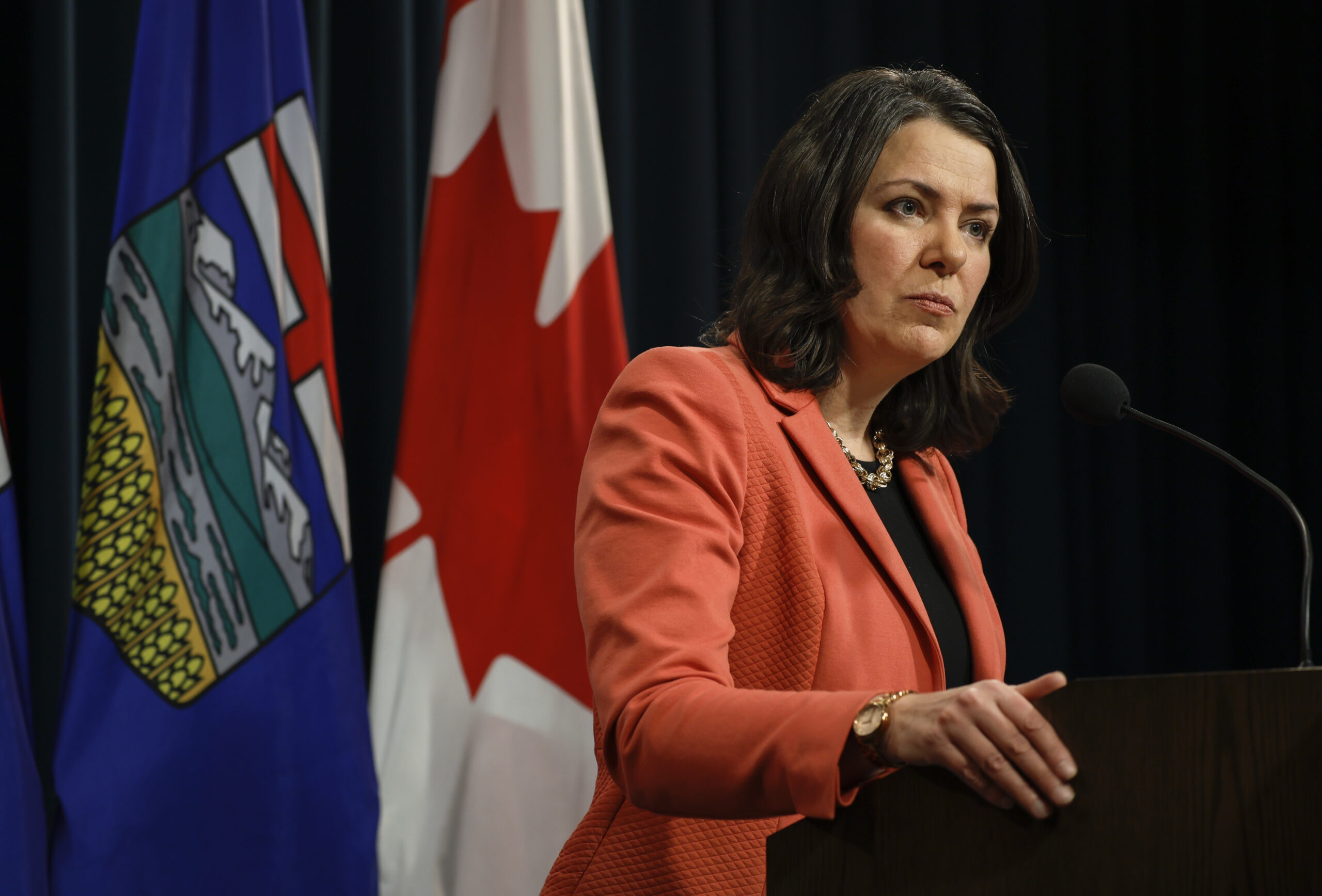
Cedar LNG says the project will produce 168,000 to 840,000 tonnes of carbon emissions per year — roughly the equivalent of putting 36,000 to 182,000 passenger vehicles on the road annually — depending on how much electricity is available for operations.
That’s before the upstream climate impacts of natural gas extraction from fracking — including the release of methane, a potent greenhouse gas — are considered. In comparison, in its first phase, LNG Canada will produce about four megatonnes of emissions annually — the equivalent of putting more than 800,000 cars on the road for a year.
The energy centre is also promoting the $10 billion Ksi Lisims LNG project, a proposal by the Nisga’a Nation and its partners to build a floating LNG terminal about two kilometres from the Alaska border. In December, the project received a 40-year export licence from the Canada Energy Regulator.
On its website, the energy centre says the Ksi Lisims LNG project, which would require provincial and federal approvals, will use “low-carbon Canadian natural gas” — a phrase Harrison said is consistent with the oil and gas industry’s desire to promote so-called “natural” gas as a climate-friendly energy source and deflect attention from the majority of emissions that occur at the point of consumption. The International Energy Association and Intergovernmental Panel on Climate Change “continue to tell us that we need to significantly reduce consumption of gas, as well as oil and coal, to meet the goals of the Paris Agreement,” Harrison pointed out.
Premier Smith has begun to tout LNG in her talking points about Canada’s energy sector. And in December, Smith wrote a letter to Prime Minister Justin Trudeau, suggesting Alberta become a “key contributor” to Japan’s efforts to diversify its LNG supply.
The only two LNG export projects approved in B.C. — LNG Canada and Woodfibre LNG in Squamish, owned by Enbridge and Indonesian billionaire Sukanto Tanoto — will export fracked gas from B.C.’s northeast to Japan and other Asian countries. The gas will be cooled to -162 C — about 1/600 of its previous volume — and shipped in tankers as long as two football fields.
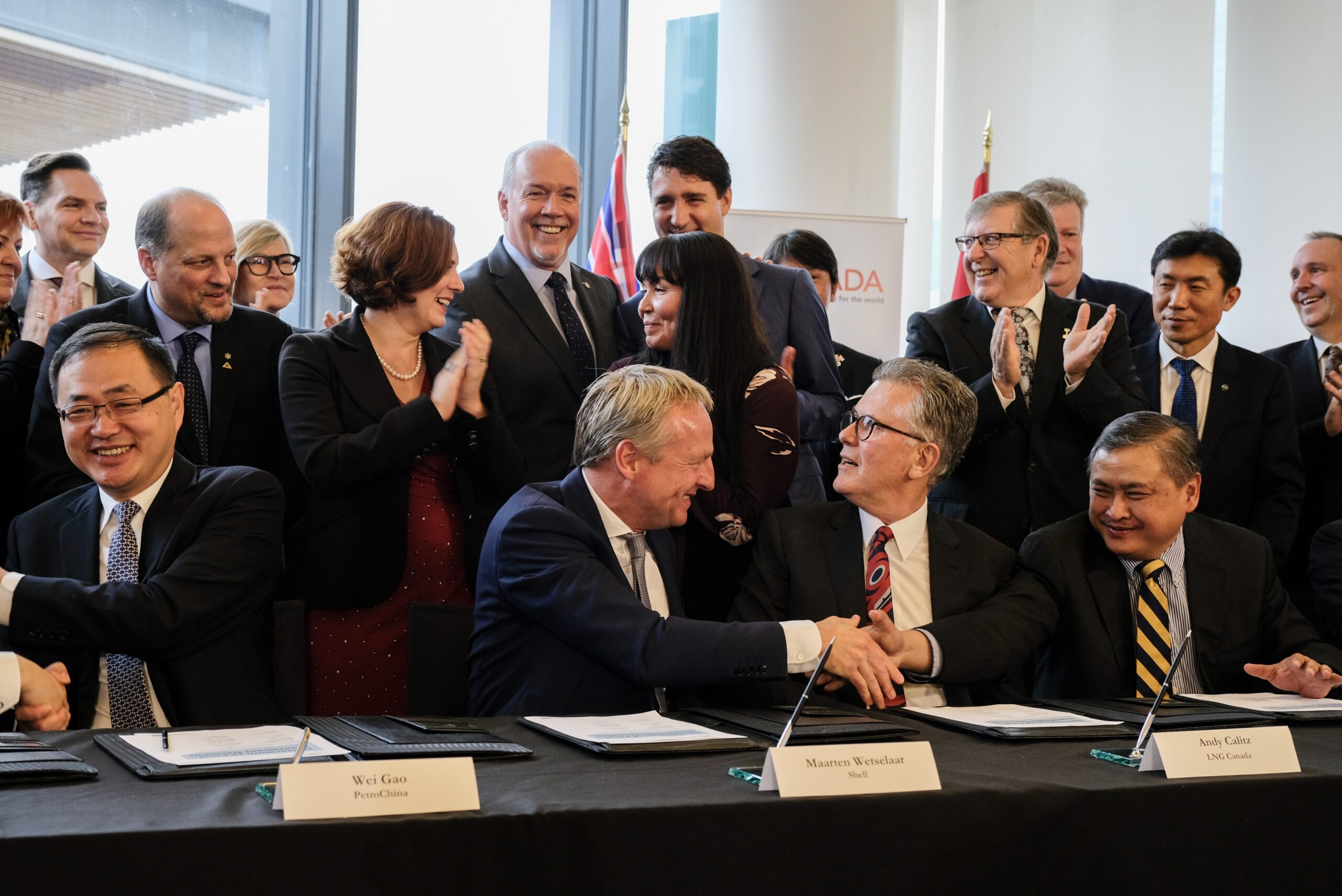
Fracked gas from Alberta would have to be shipped to B.C.’s coast and liquefied there. Emissions from the portion of the pipeline in B.C. and the liquefaction terminal would be added to B.C.’s inventory.
B.C. Green Party leader Sonia Furstenau said her chief concern about the energy war room’s push to expand B.C. LNG is centered around good governance and democracy. Citizens need to know governments haven’t been captured by vested interests, Furstenau said.
“It is quite alarming to see a body funded by a provincial government to be so openly a champion for an industry that the government ultimately has the responsibility of regulating,” Furstenau said. “One wonders, where is the public interest in this?’’
“When you have something like this Alberta war room and you have dissemination of very pro oil and gas information, that seems to me like an indication of governments not keeping the proper regulatory relationship with these industries.”
Furstenau said the B.C. government needs to demonstrate it hasn’t forgotten its critical role in regulating the oil and gas industry and ability to make decisions that are first and foremost in the public interest. “We have to, one, stop emitting as much greenhouse gas emissions and, two, start preserving the systems that can help us to absorb them like old-growth forests in B.C. In B.C., we are moving in the wrong direction,” she said.
Even without the addition of Cedar LNG and the second phase of the LNG Canada project, B.C. is struggling to accommodate emissions from Woodfibre LNG and the first phase of the LNG Canada project in its climate targets.
In November, the B.C. government said it would miss the province’s overall 2025 emissions target by 15 per cent and the 2030 target by three per cent. Environment groups have long questioned the province’s climate plan modelling, which includes as-yet unproven carbon capture and storage projects, calling it overly optimistic.
Despite a new report showing the high cost of LNG terminals and pipelines puts Canadian LNG projects at a competitive disadvantage, LNG Canada CEO Jason Klein recently said the consortium is planning to build Phase 2, pending a final investment decision.
Phase 2 was approved by the B.C. NDP government in 2018, with LNG Canada saying it would only proceed if market conditions warranted. The second phase is not included in B.C.’s climate action plan, which aims to put the province on a path to achieve net-zero emissions by 2050 while building a low carbon economy.
Klein said the second phase — like the first phase — would have to rely on gas turbines to liquify natural gas. That would double greenhouse gas emissions from the terminal and make it impossible for B.C. to meet its 2030 climate target. Running at full capacity, the LNG Canada operation would produce around 13 megatonnes of emissions annually, more than 20 per cent of B.C.’s total emissions in 2020.
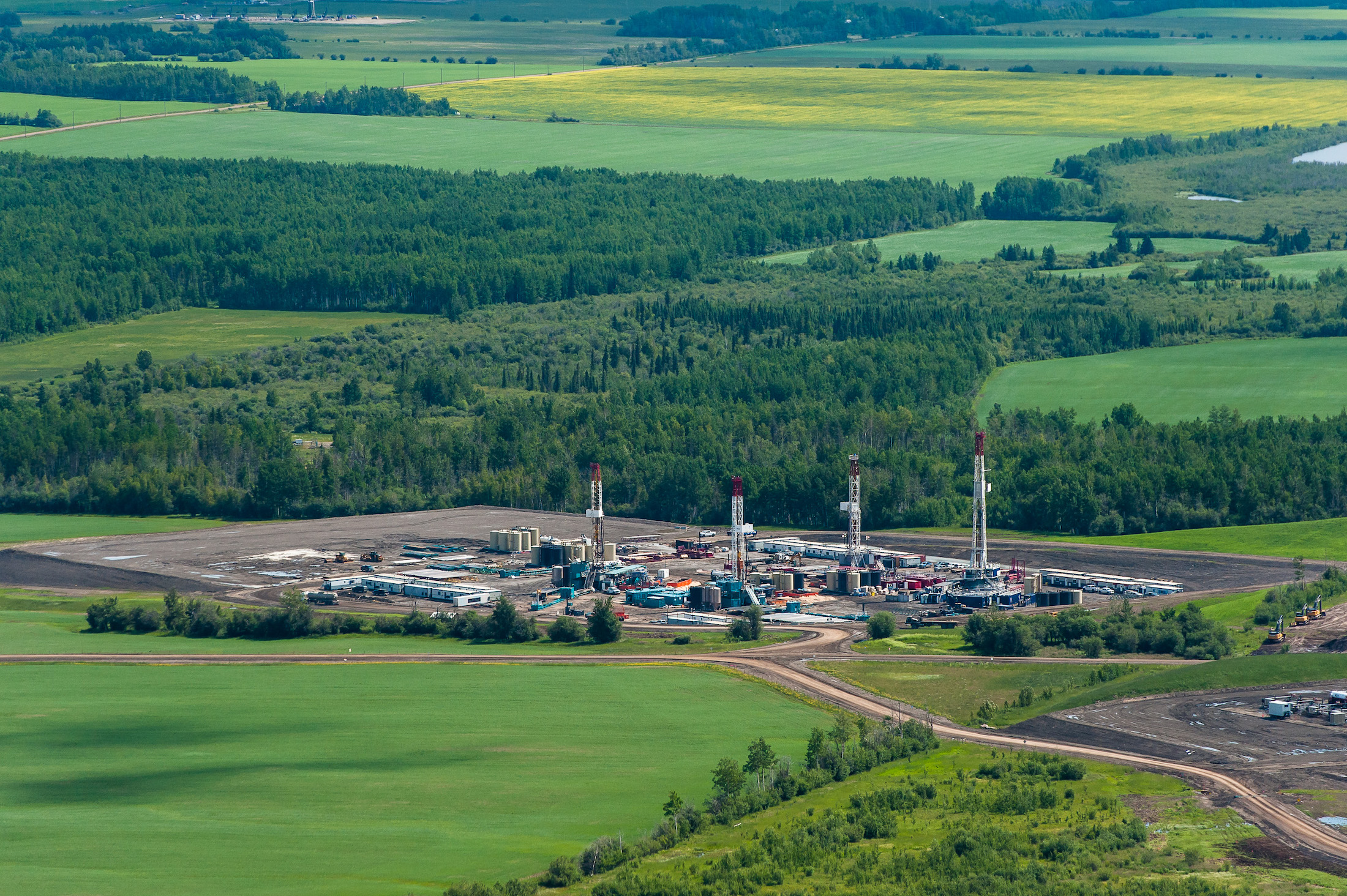
Klein’s comments were widely interpreted as an attempt to convince the B.C. and federal governments to pay hundreds of millions for new hydro lines and other infrastructure. The B.C. government has already discounted electricity for the LNG industry from publicly funded hydro projects, including future power from the Site C dam.
Such measures would lower carbon emissions but compel taxpayers and ratepayers to support a project owned by some of the most profitable multinational corporations in the world. Shell, LNG Canada’s biggest shareholder, earned record profits in 2022, posting a $9.49 billion profit in its third quarter, more than double what it took in the year before.
“Extra pressure from outside the province to subsidize that project, which is what I believe Shell and the other backers of it are looking for, is definitely interfering in British Columbia politics,” Biggs commented.
“In an era where companies like Shell are reporting record profits, it’s clear that if they wanted to implement this technology, they could,” Biggs said. “They’re choosing not to, or holding British Columbians hostage, to demand that we pay for it because it’s in their financial best interest. … This is the wrong time for them to be coming with their handout looking for free money to make this project go ahead.”
LNG Canada has already received at least $5.34 billion in subsidies from the B.C. government in the form of financial breaks and incentives, including tax exemptions, tax reprieves and cheaper electricity rates.
The federal government, despite repeated promises to end fossil fuel subsidies, chipped in $220 million so LNG Canada could purchase energy-efficient gas turbines for phase one and another $55 million to replace a Kitimat bridge to accommodate increased traffic from the project.
Harrison said there may be a narrow window for Phase 2 of the LNG Canada project to be financially viable — “probably one [in which] the business case rests on financial support from federal and provincial governments.”
In an op-ed for the Vancouver Province, Harrison and climate policy advisor Karen Tam Wu said LNG Canada is bullying provincial and federal governments into a “Sophie’s Choice”: “Subsidize our emissions reductions, or we’ll blow up B.C.’s climate targets.”
Harrison said the war room may be searching for new markets for Alberta gas in preparation for lower gas exports to the U.S. as a result of the Biden administration’s commitment to reduce fossil fuel consumption, including by replacing gas and oil heating with electric heat pumps.
“As such, the Alberta gas industry may be looking to the future and the possibility of exporting its production from the coast in the form of LNG.”
Get the inside scoop on The Narwhal’s environment and climate reporting by signing up for our free newsletter. A $335 million funding commitment to fund...
Continue reading
First Nations are leading efforts to make sure lake sturgeon can find a home in...

We’re excited to share that an investigation by The Narwhal is a finalist for the...

A new documentary, Nechako: It Will Be a Big River Again, dives into how two...
